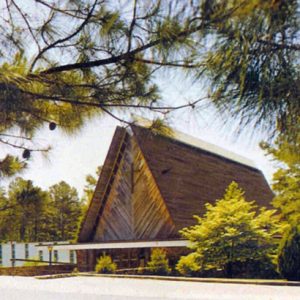calsfoundation@cals.org
Carmelite Monastery of St. Teresa of Jesus
The Carmelite Monastery of St. Teresa of Jesus is the home of the Discalced Carmelite Nuns of Little Rock (Pulaski County), a cloistered community of women in the Roman Catholic Church. The monastery is autonomous (independent) but belongs to a worldwide order composed of both men and women. The principal mission of the Carmelites is service of the Church through a life of union with God in prayer.
The Carmelite Order traces its history from the twelfth century with a group of hermits living on Mount Carmel in Palestine. In the thirteenth century, they transferred to Europe. There, the order was “reformed” in the sixteenth century as a result of the Council of Trent and the many spiritual gifts of St. Teresa of Avila. This reform, which also owes its inspiration to St. John of the Cross, gave rise to the term “discalced,” which literally means barefoot. The Carmelite nuns have been in the United States since 1790, settling in La Plata, Maryland. During the post–World War II era, there were many vocations, and because St. Teresa had wanted the number of nuns in each Carmelite community not to exceed twenty-one, it was necessary to make a new foundation.
Mother Mary Barrett, the prioress (superior) of the Carmelite nuns in Loretto, Pennsylvania, was seeking a diocese that did not have a contemplative monastery. She received a favorable response from Bishop Albert L. Fletcher of Little Rock, who wrote to her, in a letter dated January 30, 1950, “The Church—bishop, priests, sisters and the laity, in this missionary diocese, are all in great need of the prayers and sacrifices of a contemplative order like the daughters of Saint Teresa.”
Barrett, accompanied by Sister Teresa Huver, a member of the council of the monastery in Loretto, visited Little Rock in February. She then chose five members of the Loretto community to accompany her to Little Rock in June 1950. They arrived on June 17. A house was being prepared for them near the Cathedral of St. Andrew in downtown Little Rock. Until this house at 812 Louisiana Street was ready for the new community, they stayed at St. Joseph Home in North Little Rock (Pulaski County), which was staffed by the Benedictine sisters of Fort Smith (Sebastian County). Several applicants joined them when the monastery was formally established on September 12, 1950.
Out of deference for Bishop Fletcher, the monastery was named in honor of Saint Teresa of Avila, to whom he had a special devotion. Monsignor Thomas J. Prendergast, editor of the diocesan newspaper at that time, was instrumental in enabling the community to make themselves known throughout the state.
The community remained at the Louisiana Street address for eleven years. Although the house and grounds were becoming inadequate for the sisters’ needs, the immediate cause of their move to a larger place was the “Labor Day Bombing” of the Little Rock School Board building in 1959. The bombing was part of the unrest caused by the attempts of the federal government to desegregate the schools. The monastery building was a small parking lot away from the school board building, and was damaged by the blast. Though unrelated to the nuns, this event was the catalyst that brought them to their present address at 7201 West 32nd Street in southwest Little Rock. The diocese gave the sisters two acres of land on a large tree-covered property. Ground was broken in October 1960, and the sisters moved there the following year. Since that time, the sisters have been given eighteen more acres of land. A small infirmary wing was built in the fall of 1999.
The community’s mission to the Diocese of Little Rock and the state of Arkansas remained the same: prayer. The community carries on a large correspondence as a result of this apostolate that includes the needs of the Church, the world, and prayer requests from individuals. They also publish a quarterly bulletin. The main external work of the nuns is the distribution of communion breads to churches, both to Catholic churches and those of other faiths in Arkansas and beyond. In 2007, the monastery had fourteen members, none of whom were native Arkansans.
A male branch of the Carmelite Order was located at Marylake Monastery, near the town of East End in Saline County. This community had a two-fold ministry: prayer and spiritual direction.
For additional information:
Carmelite Monastery of St. Teresa of Jesus. https://littlerockcarmel.org/ (accessed July 14, 2023).
Jones, Scott. “The Founding of the Discalced Carmelite Monasteries of Saint Teresa and Marylake.” Pulaski County Historical Review 50 (Spring 2002): 2–12.
Leveritt, Mara. “Here, the Spirit of the Season Recalls Tidings of Great Joy.” Arkansas Times, December 1988, pp. 24–25.
Woods, James M. Mission and Memory: A History of the Catholic Church in Arkansas. Little Rock: August House Publishing Co., 1993.
Therese Stewart, OCD
Carmelite Monastery of St. Teresa of Jesus
 Carmelite Monastery of St. Teresa of Jesus
Carmelite Monastery of St. Teresa of Jesus  Carmelite Monastery of St. Teresa of Jesus
Carmelite Monastery of St. Teresa of Jesus 



Comments
No comments on this entry yet.